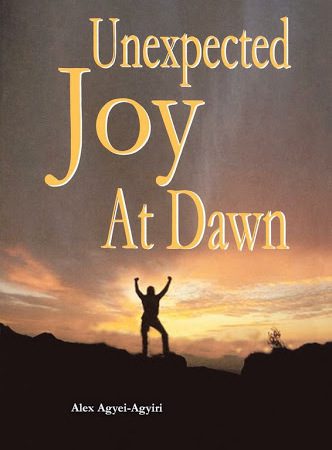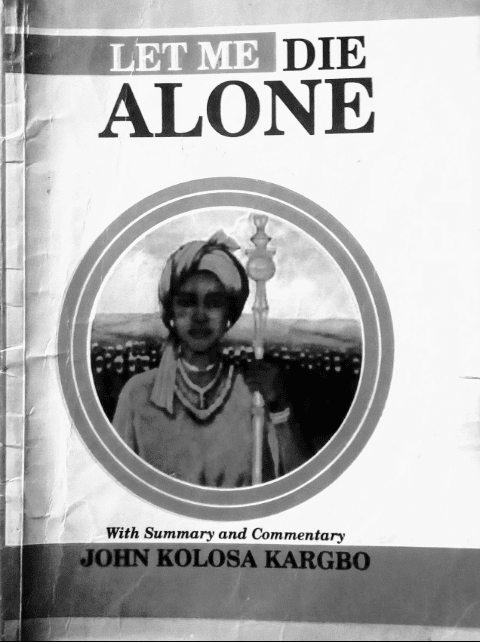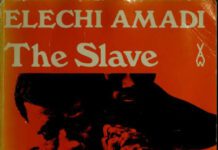I have come across a lot of students who believe Alex Agyei-Agyiri’s Unexpected Joy at Dawn is a boring, difficult novel. Some of these students I have met physically who confided in me their opinions about the book while some express their comments in the comment section of my blog posts.
So, why do these students think Unexpected Joy at Dawn is somehow difficult to understand? What is it about Unexpected Joy at Dawn that makes it distinct?
Unexpected Joy at Dawn is one of the two African prose texts recommended for students taking Literature-in-English in SSCE examinations like WASSCE, NECOSSCE, UTME, NABTEB, et cetera. Told against the backdrop of a xenophobic Nigeria and a “revolutionary” Ghana messed by brain drain and economic crises, the novel tells the stories of two long-separated siblings trying to reunite amidst their individual life challenges.
- Alex Agyei-Agyiri’s UNEXPECTED JOY AT DAWN: A Few Things You Need To Know
- Characterisation in Alex Agyei-Agyiri’s UNEXPECTED JOY AT DAWN
- Themes in Alex Agyei-Agyiri’s UNEXPECTED JOY AT DAWN
- UNEXPECTED JOY AT DAWN | Background, Setting in Alex Agyei-Agyiri’s Novel.
Here are a few things that might have informed the opinion that Unexpected Joy at Dawn is a boring and difficult book to read and understand:
The Plot
Unexpected Joy at Dawn runs a double-parallel plot. The theme of separation in the novel is made conspicuous by the double-parallel plot. The novel narrates the story of Nii Tackie on the one side and that of Mama Orojo on the other side.
In one plot, there is Nii Tackie. He works in a bank and also has to take several other jobs to keep up with his burgeoning expenses. He suffers the loss of his diseased wife, Massa, and alienation in his country of birth, Ghana. So, he embarks on a journey to Nigeria in bid to reunite with his sister, Mama Orojo. This storyline trails the journey of Nii Tackie to Nigeria, his identity crises, his slavery, and eventual reunion with his sister in the most unexpected circumstance.
In the other plot, there is Mama Orojo. She is a successful businesswoman and a religious volunteer. We follow her religious outreach missions, trips to Ghana, her meeting with Joe, and her efforts to find her long-separated brother.
It takes a whole lot of efforts to keep up with the parallel storylines projected in the text. The two stories connect with the reunion of Mama Orojo and Nii Tackie at the tail end of the novel.
The Setting
The setting of Unexpected Joy at Dawn is in itself complex. It is set concurrently in two West African countries with strained diplomatic relations, Ghana and Nigeria. At the beginning of the novel, it will have been very convenient to associate Nii Tackie with Ghana and Mama Orojo with Nigeria. But the moment Mama Orojo starts having business and familial interests in Ghana and Nii Tackie identifies with Nigeria, it becomes somehow difficult to make such distinction.
Historical Background
There is no doubt that the novel is set against the backdrop of the historical realities of both Ghana and Nigeria. A good knowledge of the events that influence the text will definitely help in the reading of the novel. The events leading to the separation of Mama Orojo and Nii Tackie start in 1969 when the Ghanaian government orchestrates the expulsion of 140,000 Nigerians from Ghana.
A similar event in Nigeria which sees the expulsion of two million Ghanaians from Nigeria in 1983 unites the long-separated siblings. The tension this decision brings to those perceived as Nigerians in Ghana is one of the reasons Nii Tackie embarks on a journey to Nigeria to find his essence, sister, and have back his sense of belonging.
Besides, it is also essential to have a foreknowledge of the actions of the Jerry Rawlings’ revolutionary administration in Ghana and perhaps that of Shehu Shagari’s government in Nigeria. These historical intricacies will go a long way in making the text an easy read.
Characterisation
Characterisation is another area where the author makes some deliberate decisions which make the text a stylistically distinct narrative. First, the author makes some characters faceless and nameless. A good example of these is Tally O. Until the tail end of the text when Mama Orojo identifies him on a newspaper page as the man who dupes him in her first flight to Ghana, no connection is made between Tally O and his multiple identities. There are some instances where he is referenced as “the man”, “I-put-it-to-me”, et cetera. This could cause confusion for the readers. The landlord of Beyeeman Complex is also not identified by any name. Except for his age range and his interests in antique objects, politics and innovative young men, we know nothing about the man.
Some characters are also used as symbols for other concepts in the text. It takes reading between the lines to spell this out. Massa for example in her ailing state symbolises the young Ghana in its socio-economic crises. Mama Akosua represents a greater fraction of the not entirely innocent masses who have to bear the brunt of the recklessness of the revolutionaries. Aaron Tsuru symbolises the country’s neglect of its best brains and the eventual brain drain.
 WHATSAPP: Click HERE to join the new Literature PADI WhatsApp group to receive latest updates on your phone and for further literary discussions!
WHATSAPP: Click HERE to join the new Literature PADI WhatsApp group to receive latest updates on your phone and for further literary discussions!










I want to download this book
Comments are closed.